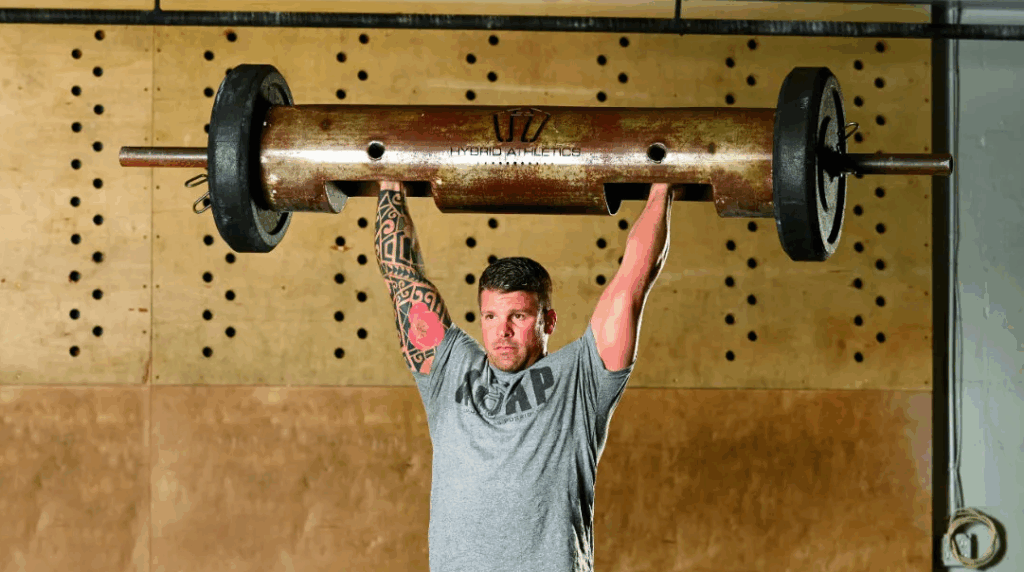Log training releases functional strength by mimicking real-world movements our ancestors used daily. Start with basic exercises like clean and presses, carries, and squats using a hardwood log 8-12 inches in diameter. Strip the bark, add handles, and progress gradually by increasing weight 2-5% every few weeks. Incorporate log work 1-2 times weekly alongside your routine. This forgotten training method builds the kind of raw power modern gyms simply can’t replicate.
The Forgotten Heritage of Log Training
Our ancestors who lifted weights didn’t have the fancy machines and well-designed equipment that modern gyms do. Instead, they used what nature gave them. Log training began hundreds of years ago when strongmen in lumberjack camps and rural areas turned everyday tasks into strength challenges. These old ways of training built functional strength that many modern workouts don’t do.
From Viking warriors to circus performers in the early 20th century, strength athletes have learned how to lift logs to gain incredible strength. These strongman workouts are great because they are simple and work. You’re not just lifting weights. You’re in charge of an object that doesn’t always do what you want it to do and fights back every time. This old way of building muscle gives you raw, usable strength that you can use in real life.

Essential Log Exercises for Total-Body Power
There is a good reason why these old training methods are still around: they work. The log clean and press is the most important exercise because it builds explosive power throughout your entire kinetic chain and strengthens your shoulders in ways that barbell work can’t. Add log carries to this to build grip strength and core stability like no other as you stabilize the heavy object.
For complete strength development, incorporate log squats and deadlifts that force your body to adjust to the log’s unique dimensions. The overhead press variation with logs creates exceptional shoulder stability due to the wider grip required.
Don’t overlook log pulls and drags, which target posterior chain muscles differently than conventional exercises. Each movement trains your body to handle unpredictable resistance, building functional power that translates to real-world strength.

Materials and Methods in Building Your Own Training Log
Since commercial training logs can be expensive and hard to find, creating your own offers offers both cost savings and customization benefits. To properly apply traditional methods, you should use a sturdy hardwood log measuring about 8 to 12 inches thick and 4 to 5 feet in length.
Remove the bark, smooth out the rough edges, and add handles by drilling holes and putting in a steel pipe or rope. These changes make it possible to use the right training methods while keeping the log’s difficult instability. For progressive overload, consider creating multiple logs of increasing weights or adding removable weight plates to your design.
The beauty of DIY logs is how they force you to develop muscle endurance through heavy lifting with an imperfect object.

Progressive Loading Strategies for Continuous Strength Gains
Three main ideas guide effective log training: slowly increasing the weight, changing the volume, and improving your technique. Your training program should add 2–5% more weight every 2–3 weeks. This approach will let your body get used to the new weight without going too far. Take your time with this. It takes longer for shoulder strength to grow than for other muscle groups.
For ideal gains, vary your volume by alternating between heavy singles at 85-95% capacity and higher-rep conditioning work at 60-75%. This combination builds both raw power and muscular endurance essential for strongman log events.
Record each session meticulously, tracking not just weight lifted but also bar speed and technical execution. Many powerlifting champions attribute their success to patient progression rather than constantly maxing out.
Incorporating Log Work Into Modern Fitness Routines
While traditional bodybuilding and CrossFit dominate gym culture, log training offers a revitalizing alternative that complements modern fitness routines perfectly. You don’t need to overhaul your entire program. Simply integrate log work once or twice weekly as a strength-building anchor.
Start by substituting conventional overhead presses with log presses, or add a 5-minute log carry finisher to your regular workouts. For hypertrophy-focused programs, log cleans provide exceptional upper-back development that dumbbells can’t match. If you’re following a powerlifting routine, log work on recovery days to build stabilizer muscles that support your competition lifts.
Logs build functional strength whether you’re an athlete, bodybuilder, or fitness enthusiast seeking a challenging change of pace.
Frequently Asked Questions
How Do I Prevent Hand Calluses During Intense Log Training?
Wear quality lifting gloves or apply chalk to reduce friction. Keep your hands dry, maintain proper grip technique, use hand balm after sessions, and file down calluses regularly to prevent painful tears.
Can Log Training Help Improve Athletic Performance in Specific Sports?
Yes, log training greatly boosts your athletic performance in specific sports by developing core stability, explosive power, and grip strength. These are the skills that transfer directly to football, wrestling, basketball, and other sports requiring total-body power.
Are There Portable Log Alternatives for Training While Traveling?
Yes, you can use sandbags, portable PVC pipes filled with sand, heavy-duty resistance bands, or Bulgarian bags while traveling. These alternatives replicate log training’s awkward weight challenges and core stability demands.
How Does Log Training Affect Joint Health Long-Term?
Log training strengthens your stabilizing muscles and improves joint stability. You’ll build protective muscle around joints, but you’ll need proper technique and recovery to avoid overuse injuries in the shoulders and back long-term.
What Nutrition Supports Recovery From Demanding Log Workout Sessions?
You’ll recover faster with protein-rich meals (1.6-2g/kg daily), complex carbs, anti-inflammatory foods like berries, adequate hydration, and timed nutrition. Eating within 30 minutes post-workout accelerates muscle repair and glycogen replenishment.








